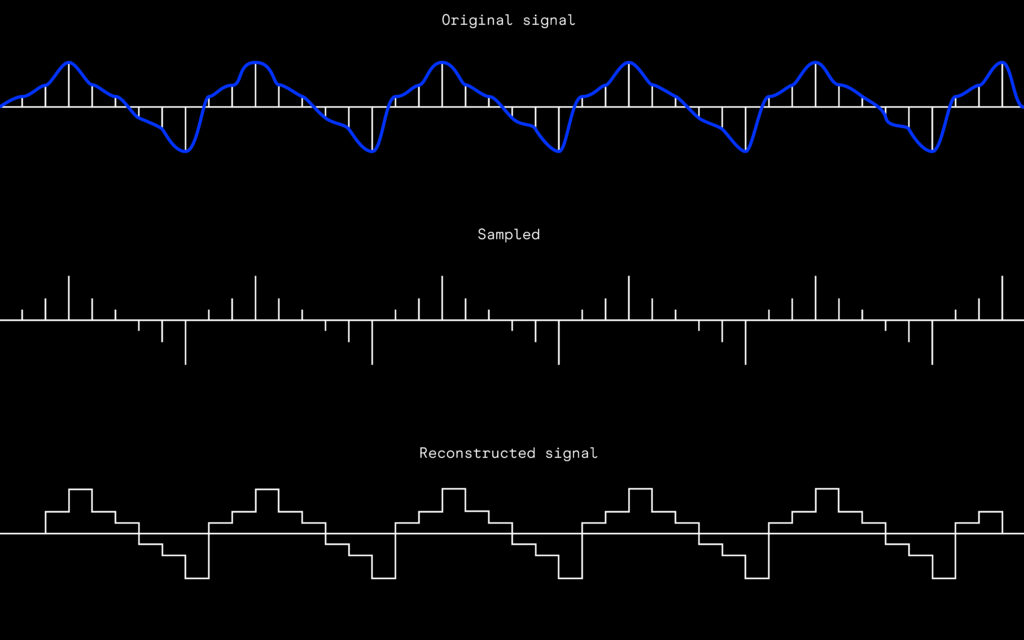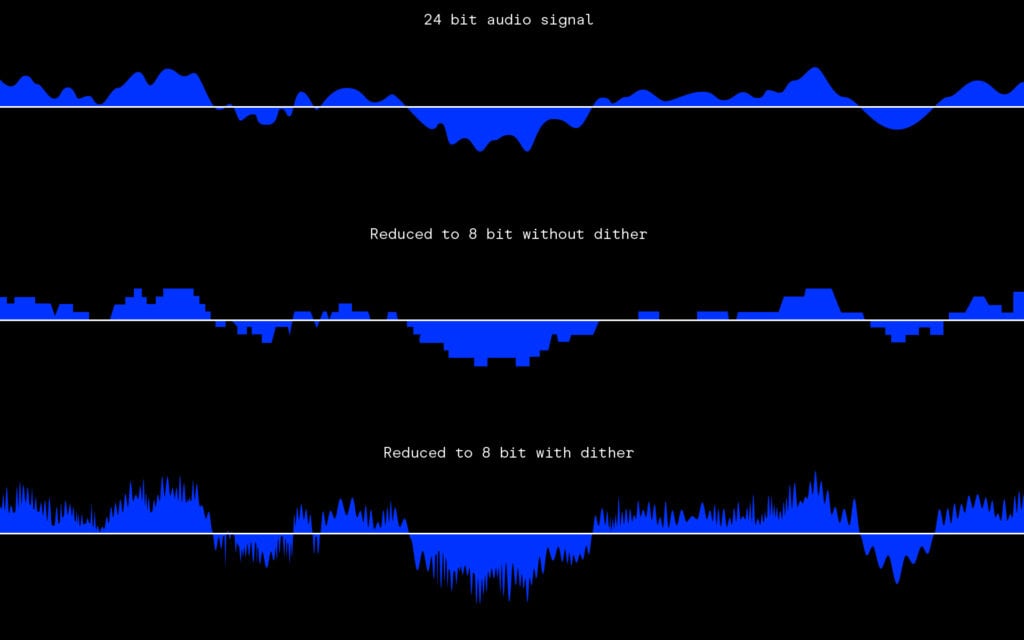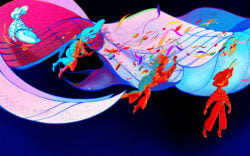Dithering helps keep digital audio sounding great, even when some data gets taken away.
Chances are you’ve come across the term before, most likely when exporting a song from your DAW. But, you may have found yourself unsure of what exactly it meant, or if it even made sense to dither in different circumstances. In this article, we demystify dithering, exploring what it is, how it works, and when you should use it, while learning some more about how digital audio works in the process.
What is dithering?
In a nutshell, dithering is a processing technique that helps us maintain the quality of digital media like audio, images, and even video. However, it achieves this in a way that might sound surprising, and even counterintuitive: by adding a small amount of noise throughout the entire file.
Why would you ever want to do something like that? To really understand the importance of something like dither, we have to first take a step back and talk about how digital audio works.
How digital audio works
When you record audio into your computer (or some other digital device), that continuous wave of analog sound is being sampled and stored as a whole bunch of numbers. This process is called analog-to-digital (ADC) conversion, and typically creates a pretty accurate representation of the original sound.

To turn our collection of data back into continuous waves in the air that we can actually hear, we need the help of the opposite process, digital-to-analog conversion (and tools like speakers and headphones)
The amount of space this data will take up primarily depends on two factors. The first is the sample rate, or how many times per second we want to measure the amplitude level of a sound. The second is bit depth, or how many discrete values we want to use to measure that amplitude. Bit depth determines how accurately we can represent an incoming sound wave’s level with every sample, in a process known as quantization.
Increasing both of these parameters will net you a higher-quality digital recording with more dynamic range. However, reducing bit depth later on means getting rid of some information, which can lead to something called quantization error.
How dithering works
So let’s say you recorded some audio at 32-bit or 24-bit resolution, but you want to export it to a lower bit rate. When your DAW creates the bounce, it will perform quantization again as part of the process. However, now it has way fewer values to work with.
What ends up happening is a bit like rounding a bunch of numbers up or down, with more extreme rounding occurring with lower bit rates. This can lead to quantization error, and even audible distortion once the sound is reproduced through speakers.
Dither is the lesser of two errors
This is where dithering works its magic. By adding a bunch of random variations throughout the entire piece of audio in the form of noise, we can effectively reduce the negative effects of quantization error by making it harder for our ears to detect them.

How dithering reduces the perceived effects of quantization error
When we say “random,” we truly mean it—the beauty lies in just how totally unrelated the noise is to our signal that’s being quantized. When we introduce just the right amount of this uncorrelated noise, we even out the harsher instances of rounding that would’ve occurred if we solely had the signal-dependent distortion from quantization. And even if it means we’re introducing a (low, low) level of constant noise, it turns out that its character is perceptually less noticeable to us than the alternative.
Dither in image processing
If you’re still a little confused about dithering, taking a look at its visual applications might also help. In Lifewire‘s article on dithering in image processing, you can clearly see how the technique allows for smoother gradients. A thin pattern of noise across an entire image is okay, because it’s smoothing out the harsher boundaries between lighter and darker values.
When to dither your audio
The ultimate question remains: when is it a good idea to use dither, and when should it be avoided?
In general, you should apply dithering any time you’re rendering audio to a lower bit depth (like converting from 32-bit to 24-bit, or 24-bit to 16-bit). On the other hand, if you’re exporting something like a 32-bit file, you usually don’t need to worry about dither. In this case, data isn’t being significantly truncated (removed) during the rendering process.
Another case where you might also avoid dithering is when you’re getting a final mixdown or pre-master file ready for professional mastering. The simple reason for this is that there are many mastering engineers who would want to perform dither themselves, for your truly final set of bounces. However, what’s most important here is communication—just make sure to ask if they didn’t specify for you!
Last but not least, don’t apply dithering if you’re converting to .mp3, AAC, or other formats that compress the audio. These conversions introduce their own artifacts that dither unfortunately won’t fix.
Conclusion: What is dithering in audio?
While it can be confusing on the surface and often overlooked, dithering is a key technique for exporting that leverages noise (of all things) to minimize the negative effects of quantization error. While there’s no universal answer when it comes to whether or not you should dither your audio, thinking about what you’re looking to get out of that particular bounce should generally point you in the right direction.
One final note is that sometimes, you might have the option to select a dithering shape or type. These are all generally going to be effective, but each option applies noise slightly differently. While their perceptual impact might be quite subtle if you’re not experienced with listening for them, always feel free to explore the different shapes and types you have at your disposal to see what might work best for your track.
We hope this guide helped you get a better understanding of what dithering is, how it works, and when you should apply it to your music. If you have any questions on the technique, start a discussion with other music creators in our Discord community or let us know in the comments.
Happy dithering!
Explore royalty-free one-shots, loops, FX, MIDI, and presets from leading artists, producers, and sound designers:
April 28, 2022

.svg)
.svg)




